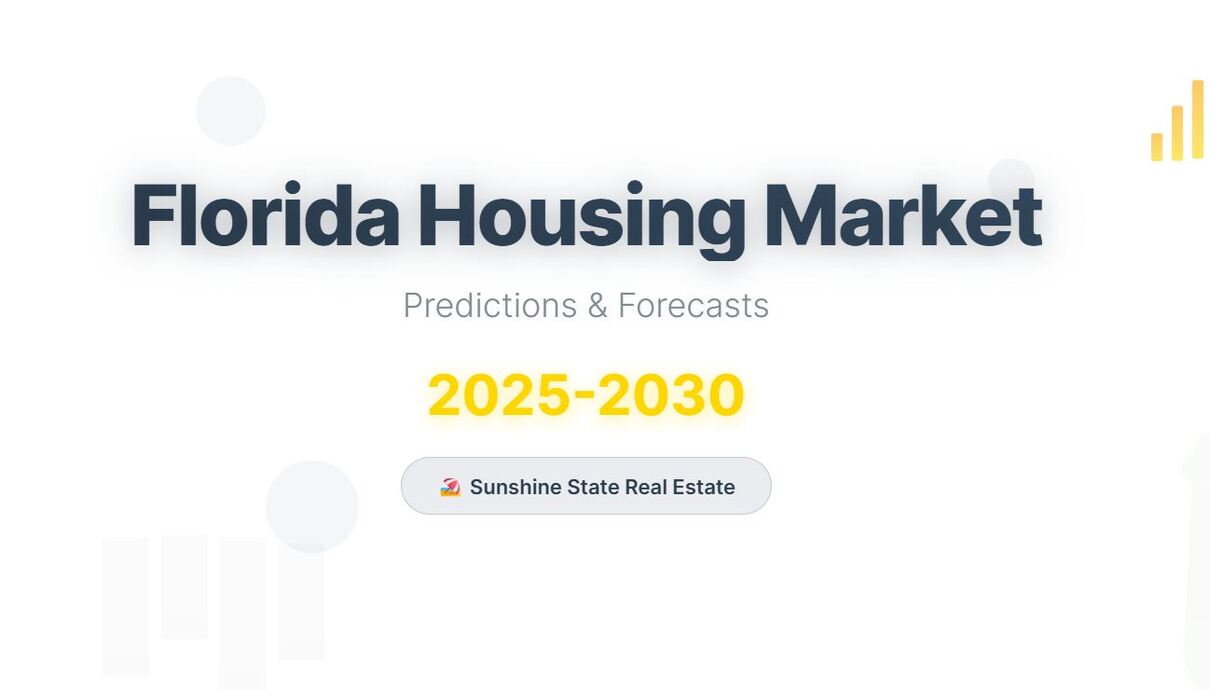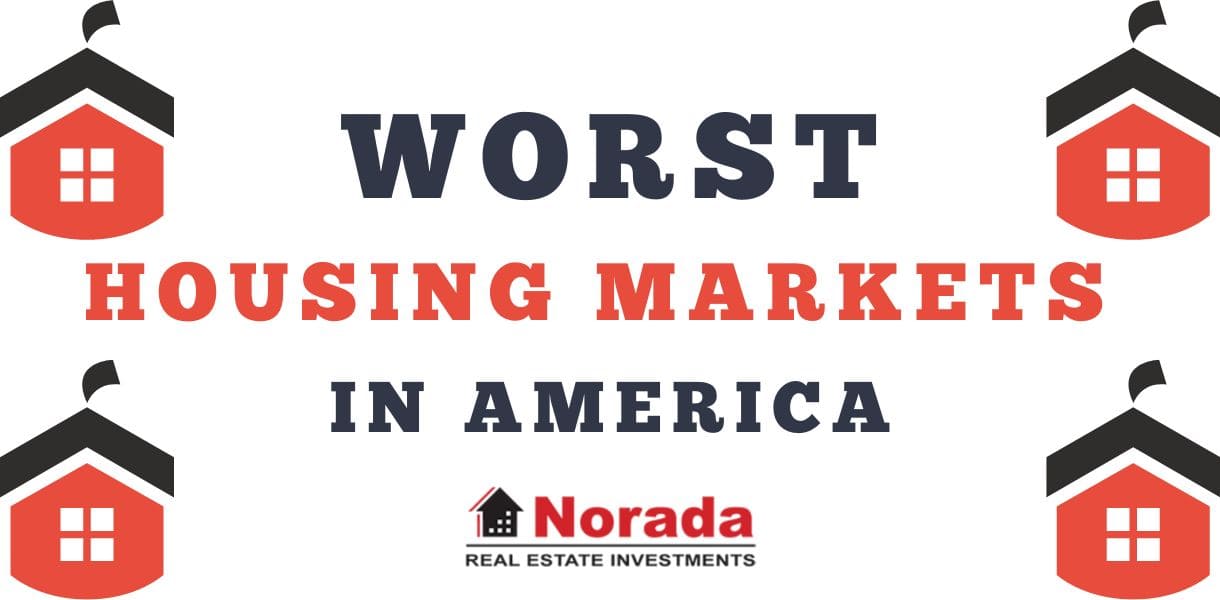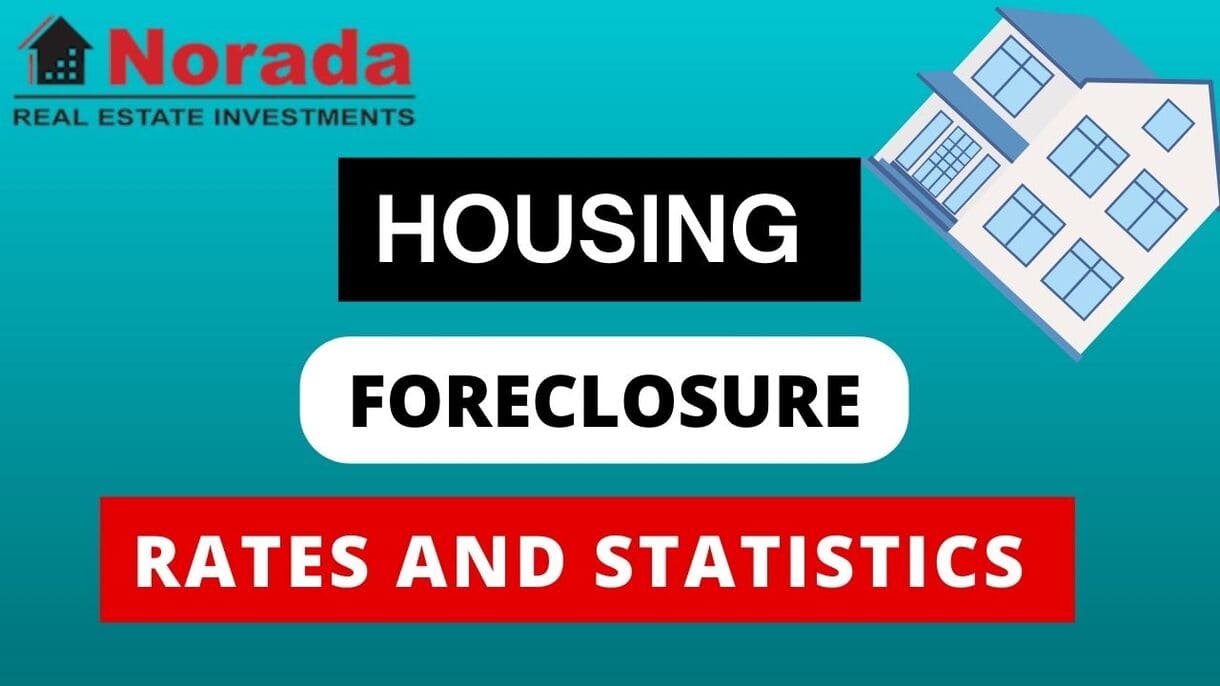Is Florida's real estate bubble about to burst, or will the Sunshine State continue to be a land of opportunity for homeowners? The Florida Housing Market: Predictions for the Next 5 Years (2025-2030) is mixed. Expect a period of stabilization and potentially slight price drops in the short term due to increased inventory and affordability challenges. However, driven by strong population growth and a vibrant economy, anticipate a robust recovery leading to a rise in median home prices, potentially reaching $470,000 to $500,000 by 2030.
Florida Housing Market: Predictions for the Next 5 Years (2025-2030)
For years, people have flocked to Florida for its sunshine, beaches, and (previously) relatively affordable living. But the explosive growth of the early 2020s has cooled, leaving many wondering what the future holds for the Florida housing market. As someone who has watched and participated in the Florida real estate scene for a while, I'm here to dive deep into where things stand today and what the next five years might bring. We’re looking at the latest data and trends to paint a realistic picture.
Where is Florida's Housing Market Right Now? (Mid-2025)
Let’s get real. The red-hot market we saw just a few years ago isn't burning as brightly. Prices have started to level off, and in some areas, even decline a bit.
As of May 2025, here's a snapshot of what's happening, according to Florida Realtors Data. Florida Realtors President Tim Weisheyer emphasizes that “Florida’s housing market is finding its balance, and that’s good for buyers and sellers alike.” and notes that local Realtors provide valuable guidance.
- Median Home Price (Single Family): $415,000, down 2.7% from last year.
- Median Home Price (Condo/Townhouse): $310,000, down 6.1% from last year.
- Inventory (Single Family): A 5.6-month supply. That's getting closer to a “balanced” market. This is good for buyers, as just a year or so ago, the inventory was meager, with less than a month's supply in many locations. This also means bidding wars are now less frequent.
- Inventory (Condo/Townhouse): A much higher 10.3-month supply. This indicates an even stronger buyer's market for condos and townhouses.
- Sales Volume (Single Family): Totaled 24,756, down 5.7% year-over-year.
- Sales Volume (Condo/Townhouse): Totaled 8,345, a significant drop of 19.9% from May 2024.
- Mortgage Rates: The elephant in the room. Mortgage rates are hovering around 6.5%, but there's a lot of debate about where they're headed.
- Insurance Premiums: Homeowners insurance is increasing drastically impacting affordability.
To get a better sense, here’s all that information in a neat table:
| Metric | Value (May 2025) | Year-over-Year Change |
|---|---|---|
| Median Home Price (Single Family) | $415,000 | -2.7% |
| Median Home Price (Condo/Townhouse) | $310,000 | -6.1% |
| Inventory (Months of Supply – Single-Family) | 5.6 months | +28.8% (active listings) |
| Inventory (Months of Supply – Condo/Townhouse) | 10.3 months | +28.8% (active listings) |
| Closed Sales (Single-Family) | 24,756 | -5.7% |
| Closed Sales (Condo/Townhouse) | 8,345 | -19.9% |
| Active Listings (Single-Family) | Increased | 28.8% (YOY) |
| Active Listings (Condo/Townhouse) | Increased | 28.8% (YOY) |
What's Driving the Florida Housing Market Rollercoaster?
Several factors are like levers pulling the Florida housing market in different directions. Understanding these is crucial to predicting what might happen next. I can easily identify the key factors, because I have been following the market since my college days.
- Population Boom: Florida's still a popular destination. We're expecting over 25 million residents by 2030, and that demand keeps the pressure on. People are moving here daily from all over the country to various cities.
- Economic Growth: Florida is experiencing strong economic growth, outpacing the national average. More jobs means more people who need homes, which is a good support for housing prices. However, potential worldwide slowdown or trade tariffs could hinder this growth, which need to be carefully observed.
- Interest Rate Guessing Game: Will they go up? Will they go down? This is the million-dollar question which affect housing demand and affordability.
- Inventory Increase: The rapid increase in inventory means that property prices might just be kept in check.
- Affordability Issues: This has become a really big problem. High prices, skyrocketing insurance costs, HOA fees, and special assessments are pricing people out. Condos are being hit hard by increased regulations after the Surfside collapse.
- Climate Change/Natural Disaster Risk: Let’s face it, Florida’s prone to hurricanes and sea-level rise. This drives up insurance and can make people think twice about living in certain coastal areas. The aftermath of Hurricane Ian, with its massive damage, has underscored the reality of this risk.
Peering into the Future: Florida Real Estate Forecast for the Next 5 Years
Alright, let’s get to the projections. Here’s what I think will happen in the Florida housing market over the next five years:
Short-Term: 2025-2026 – A Period of Adjustment
I think we'll see a period of relative calm. Prices might even dip slightly in some over-valued areas. I'm not talking about a crash, but a gentle correction to reality. Expect more negotiating power for buyers during this time. I project that we observe prices and price drops in early 2026, until the other factors change again.
Long-Term: 2027-2030 – A Steady Climb
After the dust settles, I believe Florida's underlying strengths will kick in. The population growth and economic drivers will fuel a gradual rebound. I believe house prices will reach $470,000 – $500,000 by the end of 2030. This is assuming insurance costs are somewhat controlled. Unfettered increases in insurance costs could dramatically alter this prediction.
Again, here’s a table that reflects my own predictions:
| Year | Projected Median Home Price (Single Family) | Annual Growth Rate (Single Family) |
|---|---|---|
| 2025 | $415,000 | -2.7% (from 2024) |
| 2026 | $403,745 | -2.7% [Approx] |
| 2027 | $420,095 | +4% |
| 2028 | $436,899 | +4% |
| 2029 | $454,375 | +4% |
| 2030 | $472,550 | +4% |
A Word of Caution & Advice on Regional Variations
Keep in mind, Florida is not a single, monolithic market. It varies significantly by region.
- Miami & Fort Lauderdale: International buyers will keep demand strong, but high insurance rates and condo regulations could throw a wrench in things.
- Orlando & Tampa: Good job growth will keep these inland markets relatively stable.
- Southwest Florida: Areas hit hard by hurricanes might see bargains in the short term, but be aware of potential repair costs and long-term risks.
- Jacksonville & Naples: These markets offer a mix of affordability and luxury, creating different opportunities.
My advice? Don't treat Florida housing like a get-rich-quick scheme right now. Those days are on pause. Instead, focus on long-term value and consider factors like location, flood risk, insurance costs carefully. For condo purchases, scrutinize HOA financials closely for deferred maintenance and potential special assessments.
The Bottom Line
The Florida housing market is shifting, not collapsing. The next few years will be different from the boom we've seen, but the state's fundamental appeal will likely drive a steady recovery. Buyers have a window of opportunity to negotiate. Sellers, be realistic about pricing. And everyone: do your homework, and don’t be afraid to ask for advice.
“Invest in the Hottest Real Estate Markets of Florida”
Discover high-quality, ready-to-rent properties designed to deliver consistent returns.
Contact us today to expand your real estate portfolio with confidence.
Contact our investment counselors (No Obligation):
(800) 611-3060
Read More:
- Will the Cape Coral Housing Market Repeat the Crash of 2008?
- 5 Popular Florida Housing Markets Are at High Risk of Price Crash
- 2 Florida Housing Markets Flagged for a Major Price Decline Risk
- 24 Florida Housing Markets Could See Home Prices Drop by Early 2026
- Is the Florida Housing Market Headed for Another Crash Like 2008?
- Key Trends Shaping the Florida Housing Market in 2025
- This Florida Housing Market Bucks National Trend With Declining Prices
- Florida Housing Market Crash 2.0? Analyst Warns of 2008 Echoes
- Tax Relief Proposed as Florida Housing Market Faces Deepening Crisis
- Is the Florida Housing Market on the Verge of Collapse or a Crash?
- Florida Housing Market Forecast for Next 2 Years: 2025-2026
- Florida Real Estate: 9 Housing Markets Predicted to Rise in 2025





